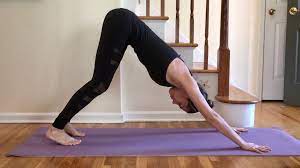Yoga Poses For Beginner To Promote Relaxation
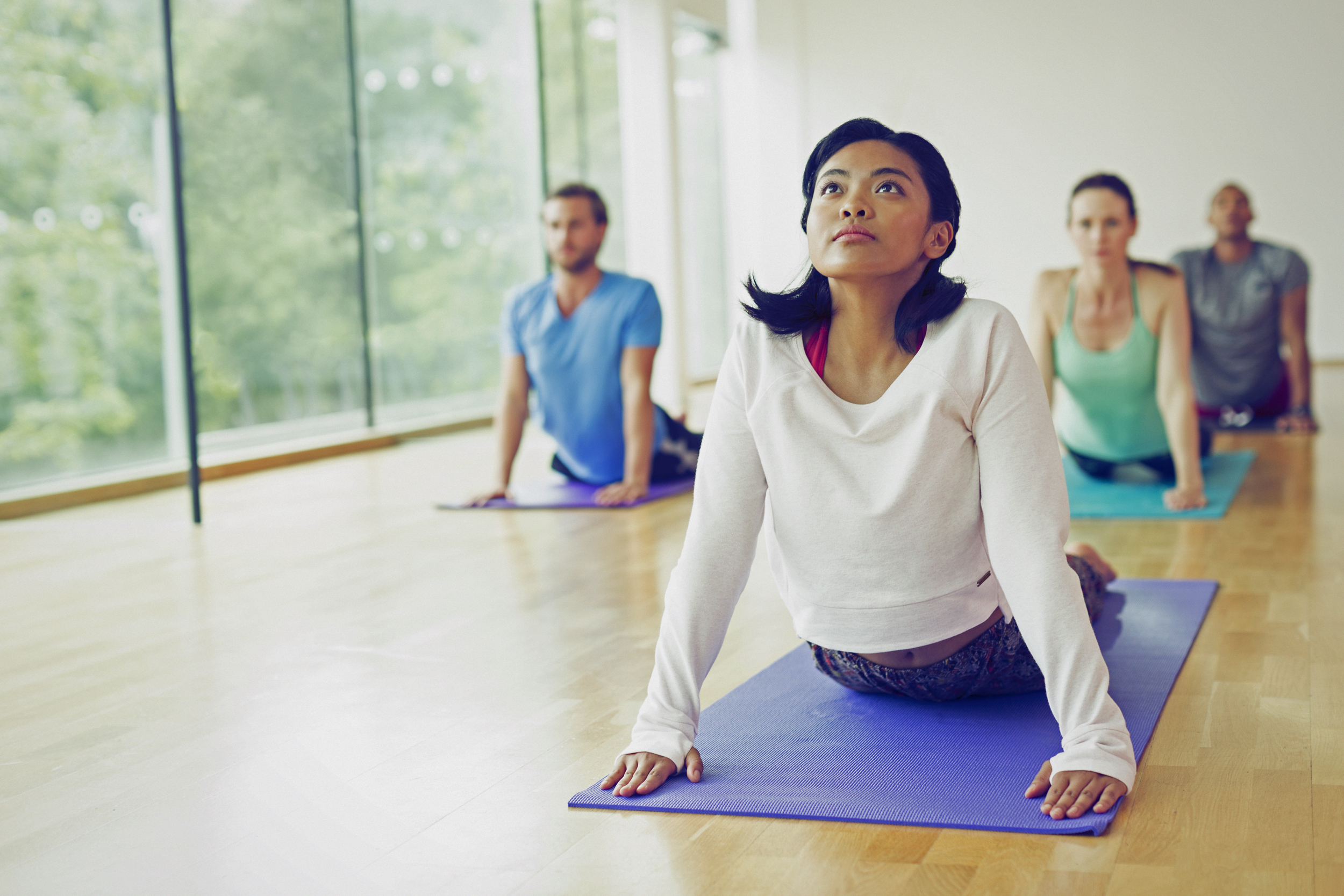
Yoga Poses For Beginner To Promote Relaxation:
The success of yoga does not lie in the ability to perform postures but in how it positively changes the way we live our life and our relationships.
Of all the recent studies on yoga’s health benefits, its powers to promote relaxation and reduce anxiety may be the most supported. However, beginner yogis may be intimidated when they enter a class and imagine all the advanced poses they’ve seen on Instagram or in the media. That’s why, particularly for beginners, there are certain yoga poses that will promote relaxation more than others. Summer is (almost) over, and many of us are looking at a busy period of work, studies, and responsibilities. Even just thinking about them is enough to get us a little stressed out! Luckily, there is plenty of easy, relaxing, and calming yoga poses to counterbalance the busy periods. These poses will calm your sympathetic nervous system (responsible for the fight or flight reaction), and get you from a feeling of stress into a feeling of calm in no time.
Keeping stress at bay has many useful benefits: you will sleep better, your digestion will work optimally and you will be in a brighter mood in general. Try these great beginner-friendly poses that will have you feeling relaxed in no time.
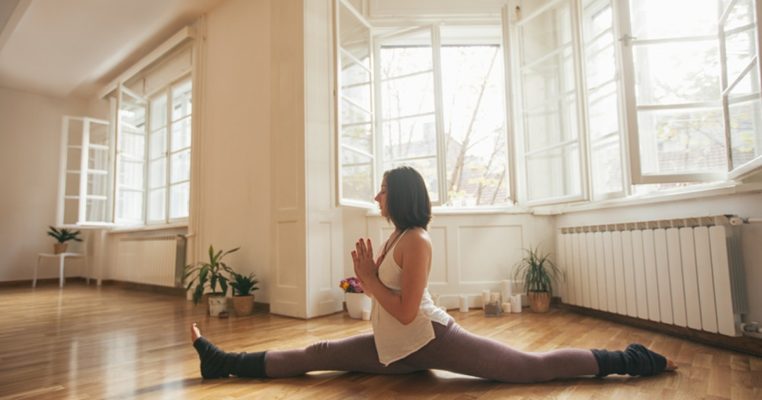
Crescent warrior
Start from a lunge position, with your hands supporting you at either side of your leading foot. Gently place the back knee down to the ground and bend the front knee to a right angle. Take your hands off the mat and stretch them above your head. Lean back slightly to increase the stretch across your back.

Warrior two
Take a wide stance, palms down, with feet slightly turned in and legs strong. Turn your right foot out 90 degrees, keeping both heels aligned and legs activated. Bend your right knee until it sits directly over your ankle. Try to keep your torso long and positioned over your hips. Look to the right, out over your fingers. Hold for 30 seconds to one minute, breathing deeply. Reverse the feet and repeat on the other side.
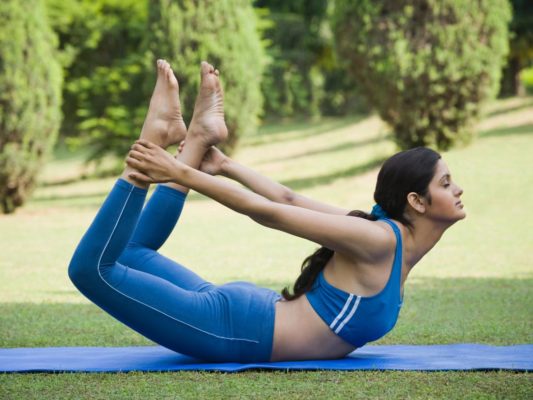
Chair pose
From standing position, with feet together, inhale and raise your arms parallel to the floor, palms down. Exhale and bend the knees. Squat as if you were going to sit on the edge of a chair. Bring your weight to the heels of the feet. Do not bring the hips any lower than your knees. Make sure your knees are pointing straight ahead. Press the shoulders down and back and reach out through the fingertips. Stare at a point on the wall in front of you for balance. Breathe and hold for three to six breaths.
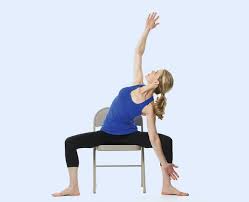
Salamba Balanasana- Child Pose
child’s pose, or balasana as it is known in Sanskrit, is the most basic of relaxing yoga poses. It is often taught in classes as a pose for students to return to if they are feeling overwhelmed with a sequence, or want to rest. It is usually included in the opening or closing sequences of class.
From all fours, sit the hips back and rest the bottom on the heels. Untuck your toes and let the tops of your feet rest on the mat. Walk your arms out in front and reach your torso forward, so your forehead is resting on the mat. From here, close your eyes and breathe into the pose. For variations, arms can reach out in front, and come back along the sides. Physically, this pose stretched the feet, ankles, lower back, and more. It relaxes the upper back, neck, and shoulders. By breathing into the pose, the central nervous system is regulated, and safe space of stillness is reached.
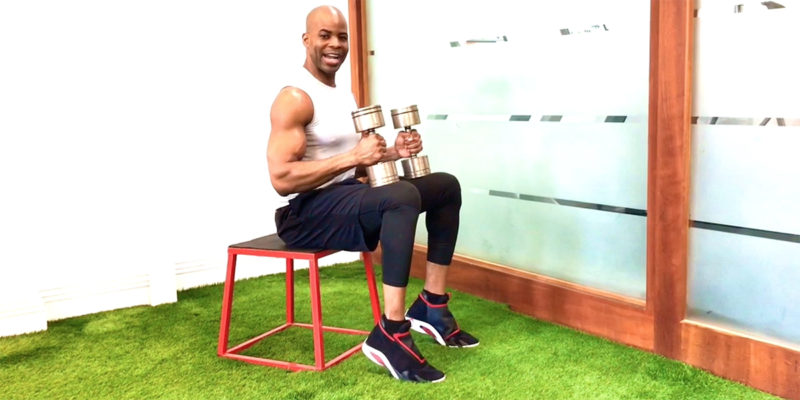
Viparita Karani – Legs Up the Wall
This easy pose is a great stress reliever, your feet (and your body) will thank you for this. Since it is a mild inversion, it will drain lymphatic fluids from your legs, reducing swelling in the feet, ankles, and knees. At the same time, it increases the circulation in the upper body and brings back the balance after spending a long time on your feet. Simply sit close to a wall, bring your buttocks as close to the wall as possible, and lift your legs up.
With any discomfort on the lower back, bring your sitting bones a bit further from the wall. Make sure your knees are not locking. You can also place a blanket or a bolster underneath your hips to increase the inversion. If you have enough space on the wall, drop your legs to a V shape to stretch the inner thighs as well.

Supta Baddha Konasana – Reclined Bound Angle Pose
This pose will give you a deep sense of calm and it will relax your entire body. While providing a hip opening and a stretch for the inner thighs, this pose will also give you a gentle heart-opening. Staying anywhere from 5-to 15 minutes will calm your central nervous system and increase your blood circulation. Learn how to do Reclined Bound Angle pose here.
Try a bolster under your back (lengthwise), you can even place some blocks under your bolster to be able to sit a bit higher. If you feel any discomfort in the knees, you can place blocks under your knees for support. You could also try this on the wall, right after Viparita Karani. Just bring the soles of your feet together and lower your feet closer to your hips.
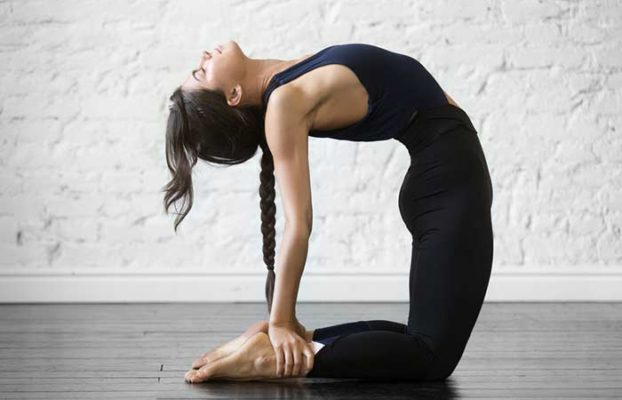
Savasana – Corpse Pose
It can be challenging to do nothing, especially when we feel stressed. But this is exactly why Savasana is an important pose to include in your practice. At first glance it may seem like nothing at all—just laying on the mat, but the trick is in its sweet nothingness, space, the allowing, and the release that it gives us. Try to end your practice every time with at least five minutes of Savasana.
From all fours, sit the hips back and rest the bottom on the heels. Untuck your toes and let the tops of your feet rest on the mat. Walk your arms out in front and reach your torso forward, so your forehead is resting on the mat. From here, close your eyes and breathe into the pose. For variations, arms can reach out in front, and come back along the side.
Adho Mukha Svanasana — Downward Facing Dog Pose
The downward-facing dog is a staple yoga pose, and one of the first that is taught to beginner yogis. It is an essential pose in the sun salutations and most vinyasa yoga sequences. A downward dog is actually an inversion and requires both strength (in the arms, shoulders, and thighs), and flexibility (in the hamstrings). Despite requiring all this effort, downward dog is also an extremely relaxing pose. From plank, lift the hips and press back. The hips and sit bones should be reaching toward the back of the room. The yogi should press through all four corners of the palms, keeping the forearms and upper arms engaged. Their heels should reach toward the mat, keeping the thighs engaged whilst relaxing the hamstrings. Shoulders should be relaxing and sinking away from the ears. Physically, this pose stretches the hamstrings, and calves, whilst strengthening the arms and thighs. The inversion aspect promotes lymphatic drainage and improved circulation, reducing headaches and pains in the neck. It improves posture and opens the chest for improved breathing. Energetically, it gives a sense of relaxation both through its physical aspects and as its symbol in yoga sequences as a place of ‘return.’
